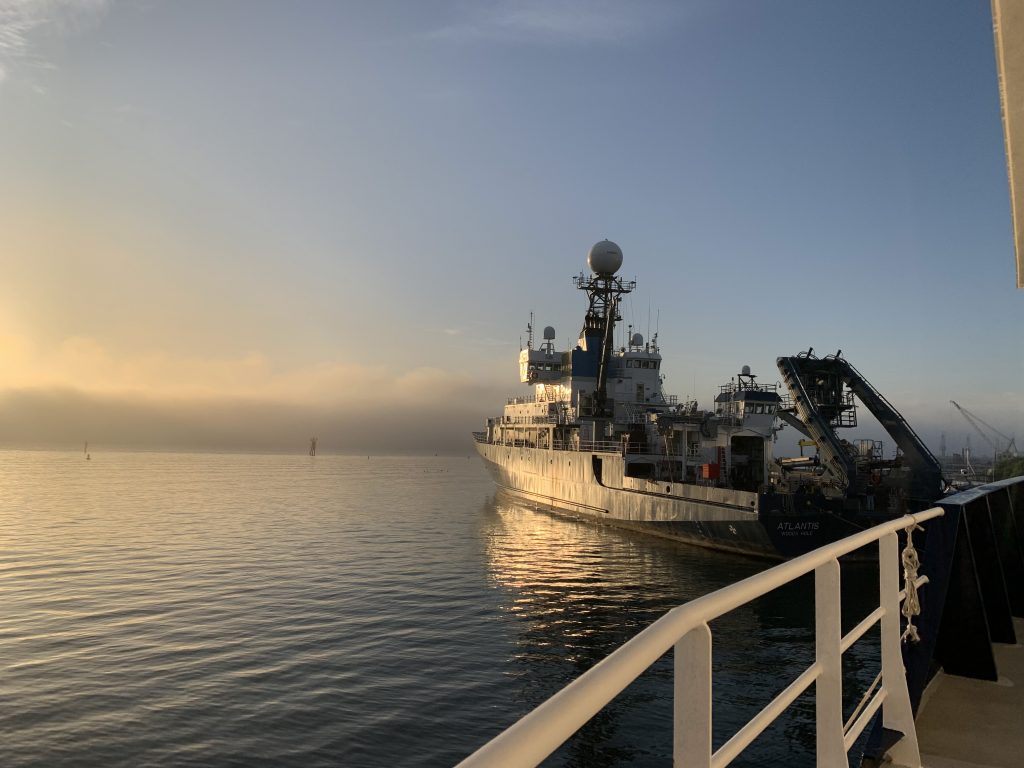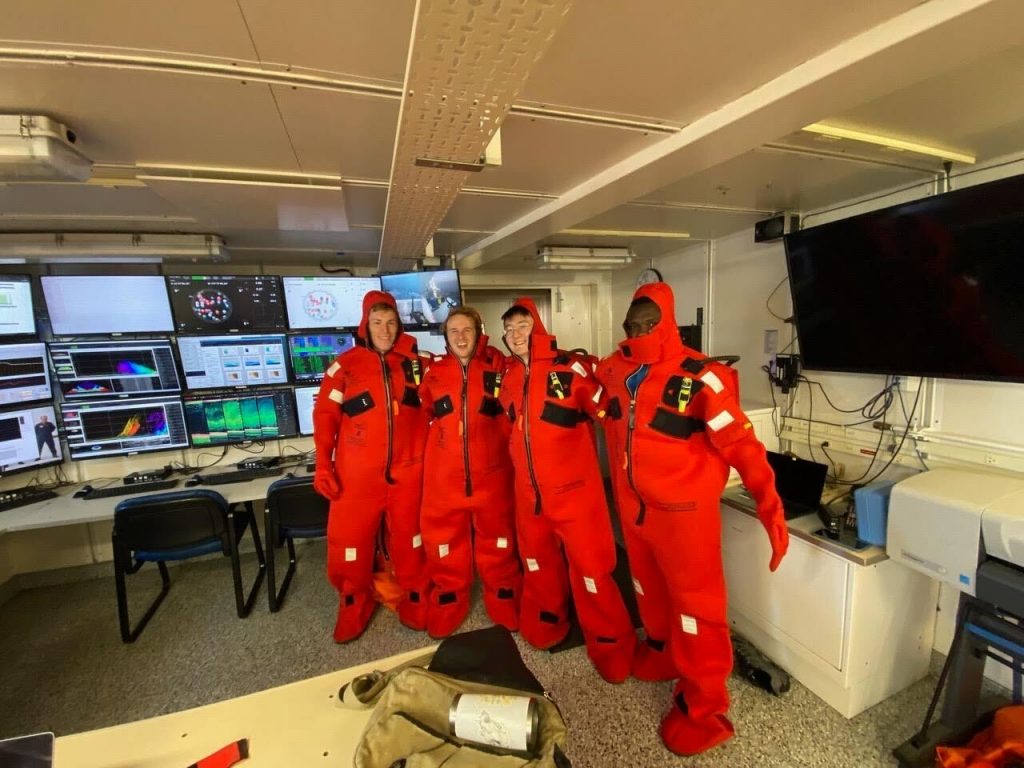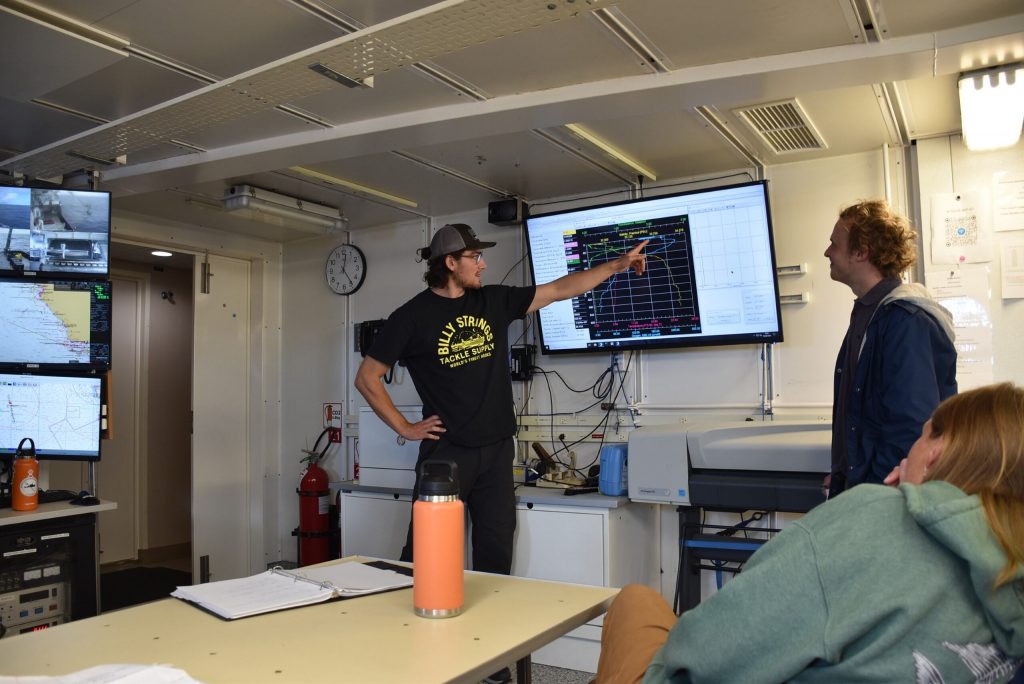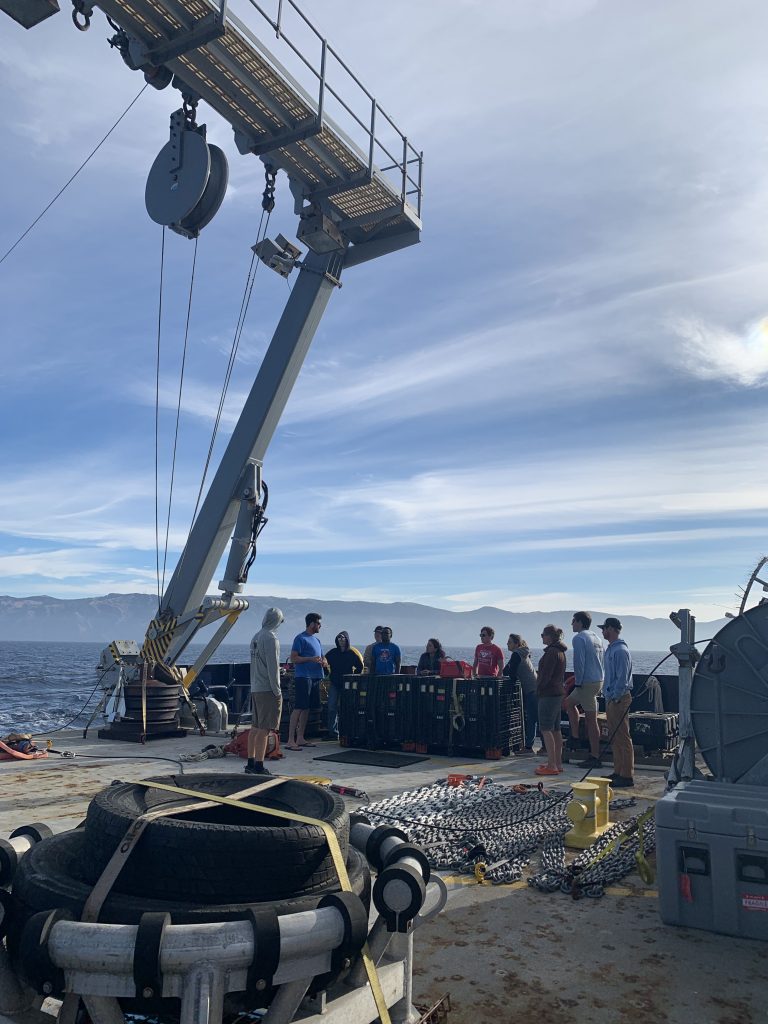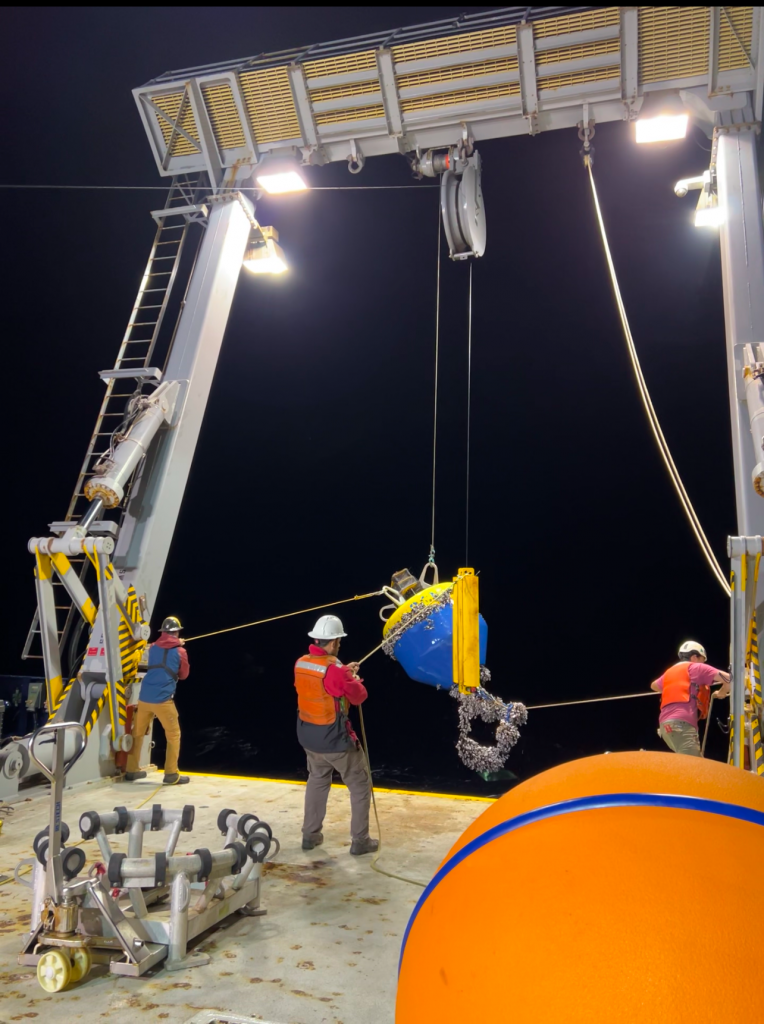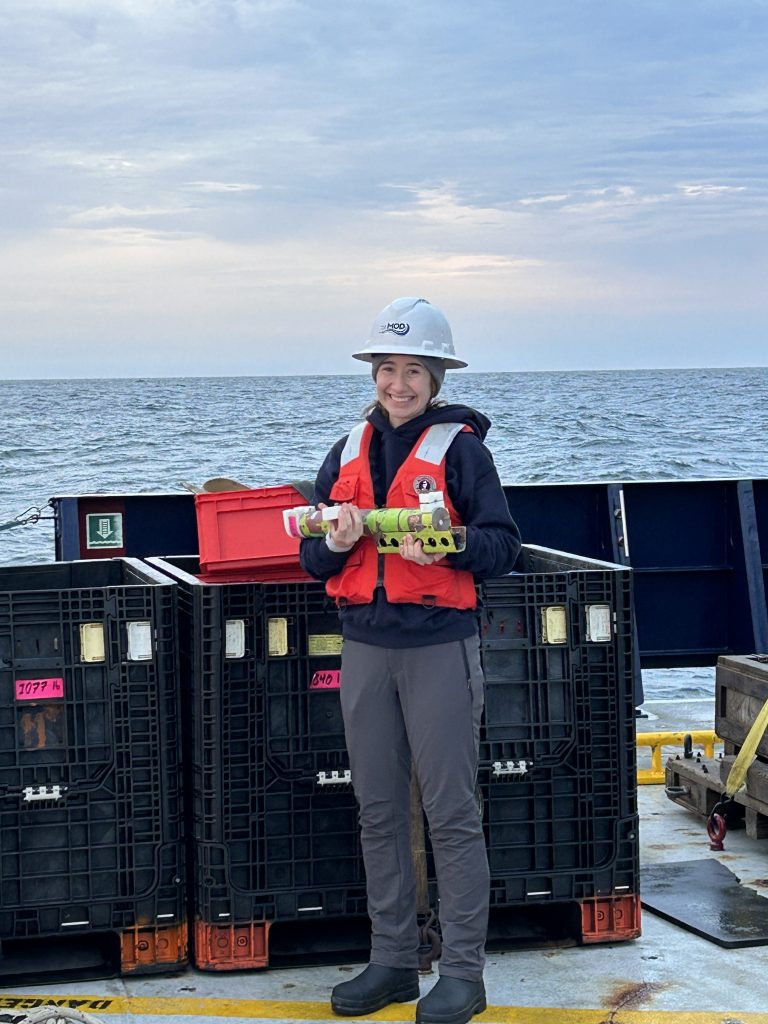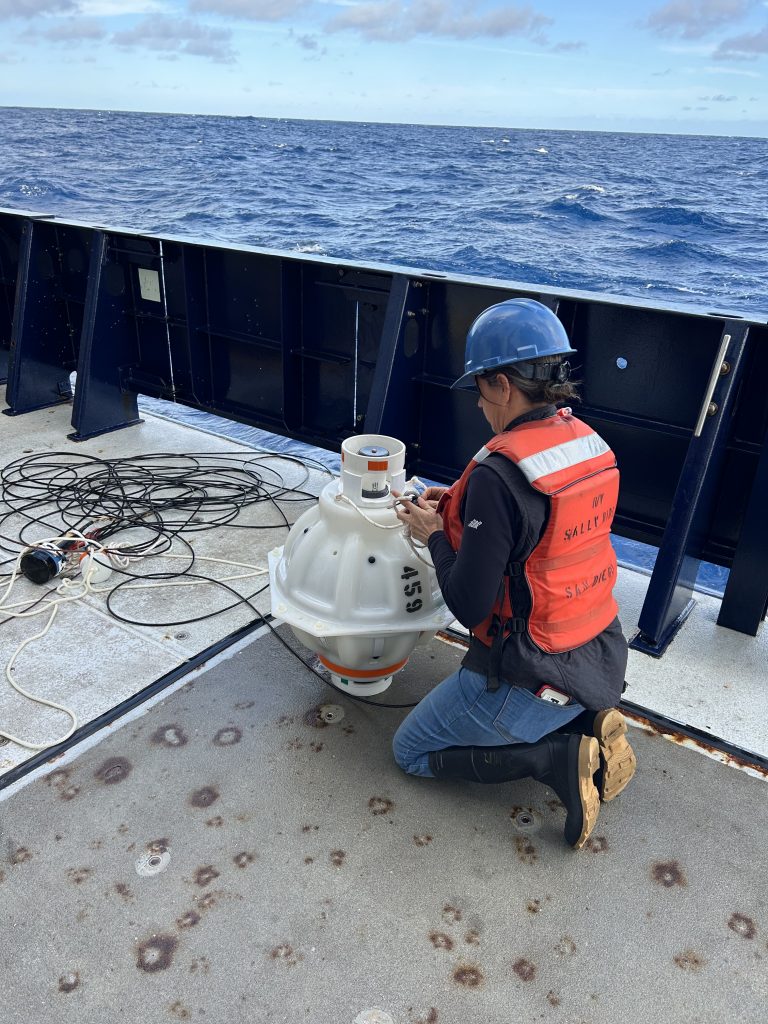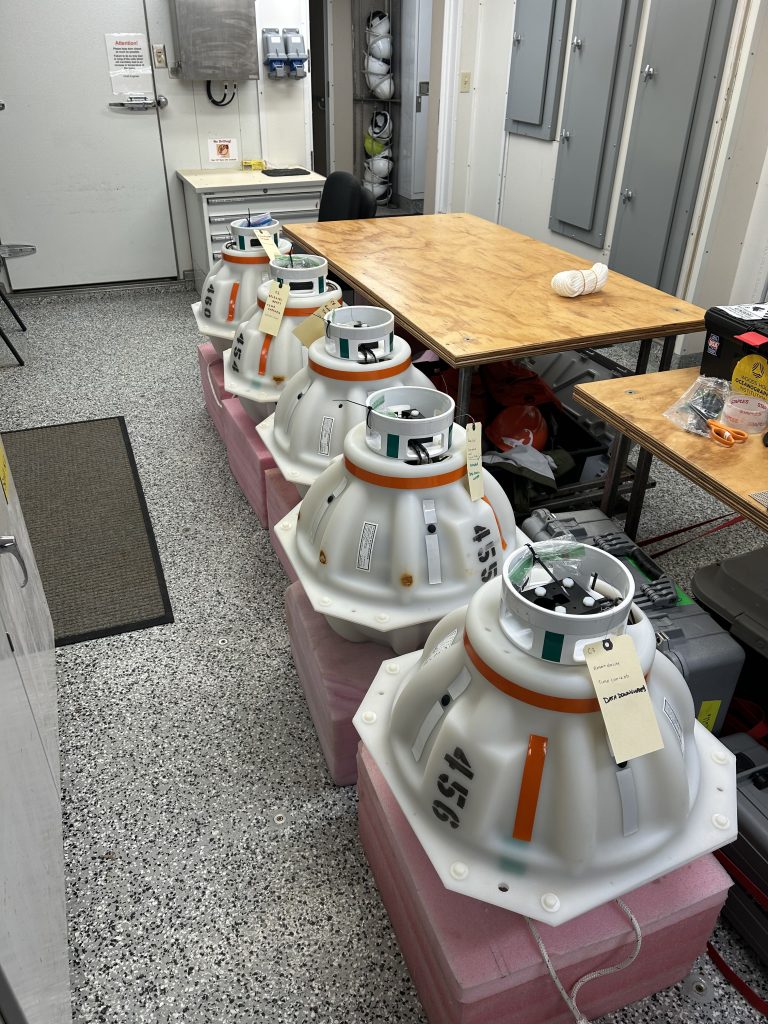
IWR Array with a full-depth mooring and CPIESs
In October 2024, the internal-wave resolving (IWR) array mooring team set out on another voyage to recover field instruments, including a high vertical-resolution mooring system and bottom mounted, current-and-pressure-equipped inverted echo sounders (CPIESs), as part of the NOPP-GIW program to better predict internal waves in the ocean. Manifested as density disturbances in the ocean interior, these internal waves are generated by surface wind and tidal flows interacting with bottom ridges. Their generation, propagation and dissipation have critical implications for coastal dynamics and water-mass mixing in the Earth’s climate system. The in-situ observations are critical for the calibration and validation of NASA’S SWOT satellite and the global ocean model HYCOM.
- Early morning departure from MARFAC
- NOPP GIW graduate students (Grant Meiners, Zihan Chen, and Mujeeb Abdulfatai) and MOD development engineer (Brendan Hall) going through safety training
- Send lab engineer Terence O’brien giving a talk on CTD analysis
Chief Scientist Magdelena Andres led the 15-person science team aboard R/V Sally Ride and departed from San Diego on 10/26. After spending the first day in transit, we began our first mission to deploy a mooring (CCE2-17) in collaboration with the California Current Ecosystem project led by the Ocean Time Series group from the Scripps Institution of Oceanography (SIO). Starting at sunrise and working until early afternoon, the mooring deployment was a success and the data will offer critical knowledge for the linkages between changes in the physical-chemical environment and the responses of local ecosystems.
After the first deployment, we steamed 200 nautical miles and began the recovery of the IWR mooring on Monday, 10/28. This mooring station, surrounded by nine CPIES, was the centerpiece of the IWR project and spent the past seven months collecting and transmitting real-time data from the ocean’s surface all the way down to its floor, about 4,500 meters deep. Research scientists, engineers, and technicians from the Ocean Time Series group and the Multiscale Ocean Dynamics group did an excellent job in the recovery mission. Despite the weather report of stormy conditions, the ocean was surprisingly cooperative and helped to deliver a smooth experience for the cruise.
- The science party briefings on mooring deployment and recovery
- NOPP central morning recovered
- MOD graduate student Caeli Griffin with a current meter
With the central mooring on board, we began the recovery for CPIES in the same evening. An acoustic signal was sent from the ship to release the CPIES from its anchor at ocean bottom. It would take about an hour for the CPIES to float from the bottom, and the CPIES would stop broadcasting its location signals. Everyone waited in the radio silence, and some of us went up to the bridge to look for its visual signal. Time went by seconds after seconds in the near complete darkness. Suddenly, we heard some noise coming from the radio and moments later, someone saw the white flash of a strobe light in the distance – it must be our CPIES! The ship headed straight into that direction and half an hour later we picked up the first CPIES which spent a whole year in the water.
Over the next three days, the team recovered eight more CPIESs in what became a remarkable demonstration of precision and teamwork. Finding these relatively small instruments (about the size of a mini-fridge) in an area as large as New York City’s five boroughs was no small feat. As the team gained experience, we were able to reduce the recovery time to just 15 minutes from first spotting a CPIES to getting it safely aboard. The high resolution, year-long data of bottom pressure, current speed, and acoustic travel time would offer insights to interval wave dynamics in the region, which would be critical to calibrate satellite measurements and enhance the predictability of global models.
- Chief Scientist Magdalena Andres with a recovered CPIES
- Five CPIESs recovered from the ocean bottom at about 4,500m
The science party also conducted a total of seven CTD casts during the CPIES recovery to calibrate instruments and establish information about the geostrophic current in the region. It provided valuable hands-on learning experience for the graduate students aboard for observational oceanography.
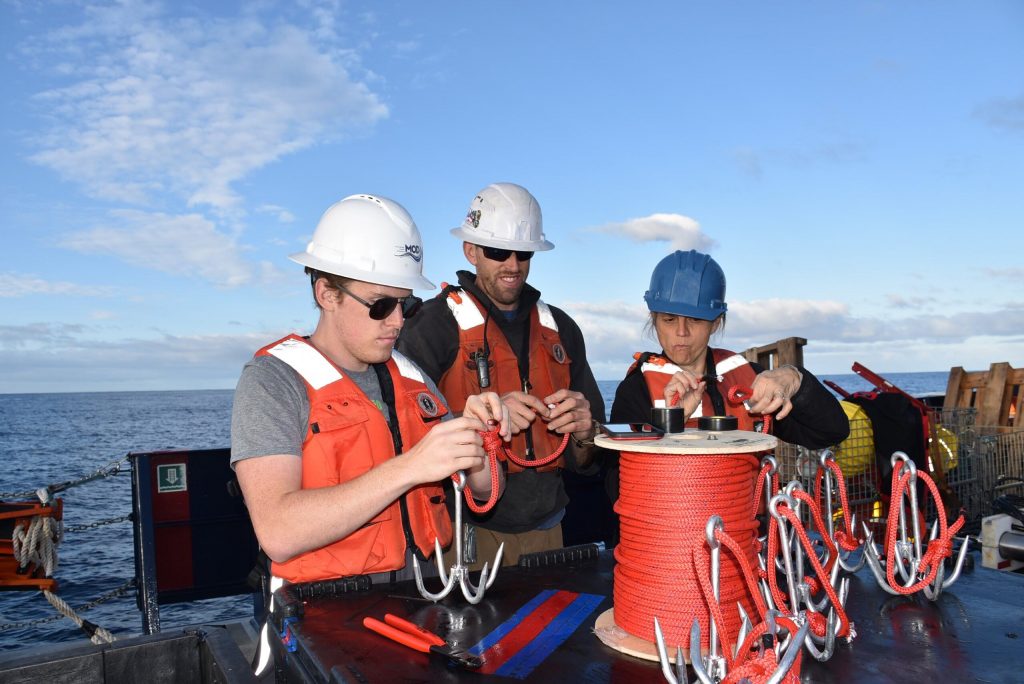
Grant Meiners, Noah DesRosiers, and Magdalena Andres tying knots to drag for an unrecovered CPIES from an earlier deployment
The ship returned to San Diego on Saturday, 11/2, successfully concluding the IWR team’s field work in California. Next summer, the team will sail again to the Aleutian Islands in Alaska for similar CPIES deployment. It is another hot spot of internal wave activity, and the in-situ observations will unveil more stories about the internal wave dynamics in a different region.
Stay tuned for more discoveries in 2025!
Zihan Chen and Caeli Griffin

